TAPS
Synonym(s):[(2-Hydroxy-1,1-bis(hydroxymethyl)ethyl)amino]-1-propanesulfonic acid;N-[Tris(hydroxymethyl)methyl]-3-aminopropanesulfonic acid;TAPS
- CAS NO.:29915-38-6
- Empirical Formula: C7H17NO6S
- Molecular Weight: 243.28
- MDL number: MFCD00007538
- EINECS: 249-954-1
- SAFETY DATA SHEET (SDS)
- Update Date: 2025-12-05 14:33:18

What is TAPS?
Description
TAPS is a zwitterionic buffering agent used in biochemistry and molecular biology. It is part of the Tris family of buffers and is useful for a pH range of 7.7 – 9.1. The members of TRIS family are tris(hydroxymethyl)aminomethane (TRIS), N-[tris(hydroxymethyl)methyl]-2-aminoethanesulfonic acid (TES), N-[tris(hydroxymethyl)methyl]-3-aminopropanesulfonic acid (TAPS), N-[tris(hydroxymethyl)methyl]-3-amino-2-hydroxypropanesulfonic acid (TAPSO), and N-tris(hydroxymethyl)methyl-4-aminobutanesulfonic acid (TABS) buffers[1]. The solubilities of TAPS in aqueous solution decrease with increasing concentration of the salts (salting-out effect)[2]. TAPS is the preferred culture media buffer used for dinoflagellate experiments, allowing for minimal pH change and maximal growth. It is also often used in capillary electrophoresis to analyze DNA and in planar chromatography to separate dyes. TAPS may form a complex with some common metals so stability constants and concentrations should be taken into account when choosing this buffer. TAPS is capable of inhibiting connexin channels in animal cells.
Chemical properties
White/clear crystalline powder
The Uses of TAPS
A zwitterionic Good's Buffer
What are the applications of Application
TAPS is a zwitterionic buffer that has a useful pH range of 7.7 - 9.1
Definition
ChEBI: N-[tris(hydroxymethyl)methyl]-3-aminopropanesulfonic acid is an organosulfonic acid.
What are the applications of Application
TAPS is a zwitterionic buffer used in biochemistry and molecular biology. It has a useful pH range of 7.7 - 9.1. TAPS has been utilized in capillary electrophoresis of DNA and DNA-dye complexes. Dyes can be separated by planar chromatography with electroosmotic flow containing 1 mM TAPS in the mobile phase. The stability constants of metal ions with TAPS have been investigated through the use of capillary electrophoresis. TAPS has also been shown to inhibit the activity of connexin channels. The activity of various carbonic anhydrases has been studied using TAPS physiological buffer, pKa = 8.4 at 20° C.
References
[1] Gupta B, et al. Stability Constants for the Equilibrium Models of Iron(III) with Several Biological Buffers in Aqueous Solutions. Journal of Solution Chemistry, 2013; 42: 2296–2309.
[2] Taha M, et al. New Insights into Buffer-Ionic Salt Interactions: Solubilities, Transfer Gibbs Energies, and Transfer Molar Volumes of TAPS and TAPSO from Water to Aqueous Electrolyte Solutions. Journal of Solution Chemistry, 2010; 39: 1665–1680.
Properties of TAPS
| Melting point: | 230-235 °C (dec.) |
| Density | 1.4290 (rough estimate) |
| refractive index | 1.6370 (estimate) |
| Flash point: | 110 °C |
| storage temp. | Keep in dark place,Sealed in dry,Room Temperature |
| solubility | H2O: 1 M at 20 °C, clear, colorless |
| form | Solid |
| pka | 8.55; pKa (37°): 8.1; pKa2 (25°): 8.28 |
| color | White |
| PH Range | 7.7 - 9.1 |
| Odor | Odorless |
| Water Solubility | Soluble |
| Merck | 13,9148 |
| BRN | 2452420 |
| Stability: | Stable. Incompatible with strong oxidizing agents |
| CAS DataBase Reference | 29915-38-6(CAS DataBase Reference) |
| EPA Substance Registry System | 1-Propanesulfonic acid, 3-[[2-hydroxy-1,1-bis(hydroxymethyl)ethyl]amino]- (29915-38-6) |
Safety information for TAPS
| Signal word | Warning |
| Pictogram(s) |
 Exclamation Mark Irritant GHS07 |
| GHS Hazard Statements |
H302:Acute toxicity,oral H315:Skin corrosion/irritation H319:Serious eye damage/eye irritation H335:Specific target organ toxicity, single exposure;Respiratory tract irritation |
| Precautionary Statement Codes |
P261:Avoid breathing dust/fume/gas/mist/vapours/spray. P305+P351+P338:IF IN EYES: Rinse cautiously with water for several minutes. Remove contact lenses, if present and easy to do. Continuerinsing. |
Computed Descriptors for TAPS
| InChIKey | YNLCVAQJIKOXER-UHFFFAOYSA-N |
New Products
4,4-Difluoropiperidine hydrochloride tert-butyl 9-methoxy-3-azaspiro[5.5]undecane-3-carboxylate Indole Methyl Resin N-Isopropylurea N,N-Dicyclohexylcarbodiimide(DCC) MELDRUMS ACID 5-METHYLISOXAZOLE-4-CARBOXYLIC ACID Magnessium Bis glycinate Zinc ascorbate 1-bromo-2-butyne 2-acetamidophenol 9(10H)-anthracenone Erythrosin B, 4-Piperidinopiperidine 2-((4-morpholinophenylamino) (methylthio) methylene) malononitrile 2,4-dihydroxybenzaldehyde 3-(4-morpholinophenylamino)-5-amino-1H-pyrazole-4-carbonitrile Methyl 2-methylquinoline-6-carboxylate 2,6-dichloro-4-nitropyridine 4-Bromo-2-chlorobenzonitrile 2-(benzylamino)acetic acid hydrochloride 4-(tert-Butoxycarbonylamino)but- 2-ynoic acid 3,4-dihydro-2H-benzo[b][1,4]dioxepine 1-Phenyl-1-cycloprppanecarboxylicacidRelated products of tetrahydrofuran
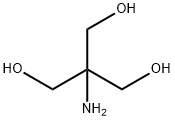
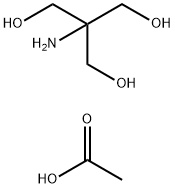

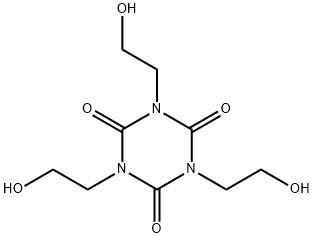

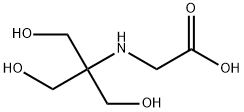

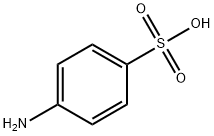
You may like
-
 Taps, puriss CAS 29915-38-6View Details
Taps, puriss CAS 29915-38-6View Details
29915-38-6 -
![N-Tris(hydroxymethyl)methyl-3-aminopropanesulfonic Acid [Good's buffer component for biological research] CAS 29915-38-6](https://img.chemicalbook.in//Content/image/CP5.jpg) N-Tris(hydroxymethyl)methyl-3-aminopropanesulfonic Acid [Good's buffer component for biological research] CAS 29915-38-6View Details
N-Tris(hydroxymethyl)methyl-3-aminopropanesulfonic Acid [Good's buffer component for biological research] CAS 29915-38-6View Details
29915-38-6 -
 TAPS BUFFER For Biochemistry CAS 29915-38-6View Details
TAPS BUFFER For Biochemistry CAS 29915-38-6View Details
29915-38-6 -
![N-[Tris(hydroxymethyl)methyl]-3-aminopropanesulfonic acid CAS 29915-38-6](https://img.chemicalbook.in//Content/image/CP5.jpg) N-[Tris(hydroxymethyl)methyl]-3-aminopropanesulfonic acid CAS 29915-38-6View Details
N-[Tris(hydroxymethyl)methyl]-3-aminopropanesulfonic acid CAS 29915-38-6View Details
29915-38-6 -
 3-(4-amino-1-oxoisoindolin-2-yl)-1-methylpiperidine-2,6-dione 98%View Details
3-(4-amino-1-oxoisoindolin-2-yl)-1-methylpiperidine-2,6-dione 98%View Details -
 20677-73-0 (2,2-diethoxyethyl)methylamine 98%View Details
20677-73-0 (2,2-diethoxyethyl)methylamine 98%View Details
20677-73-0 -
 3-(4-(hydroxyamino)-1-oxoisoindolin-2-yl)piperidine-2,6-dione 98%View Details
3-(4-(hydroxyamino)-1-oxoisoindolin-2-yl)piperidine-2,6-dione 98%View Details -
 57381-49-4 2-bromo-4-chlorobenzonitrile 98%View Details
57381-49-4 2-bromo-4-chlorobenzonitrile 98%View Details
57381-49-4
